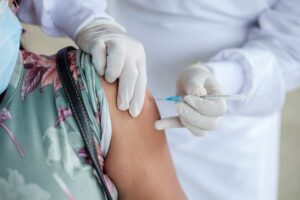
Overview
Monkeypox is a viral disease caused by the pox virus. It affects wild and sylvatic monkeys, and occasionally humans. Based on research, the disease was first identified in monkeys during the 17th century in India. In humans, monkeypox is known to cause red pimples that may appear similar to chickenpox.
The symptoms of monkeypox are similar to other diseases transmitted from animals including smallpox, chickenpox, and herpes zoster. However, some of these symptoms may also overlap with other conditions such as lupus erythematosus and bullous pemphigoid. Thus it is important to consult a doctor for diagnosis and treatment if you suspect you have contracted this disease.
So What Exactly is IT?
It is a variant of the orthopoxvirus that also causes smallpox in humans. It is primarily a disease of wild or captive monkeys and is occasionally transmitted to humans who come into direct contact with the animal’s infectious fluids. The natural host for the virus is the Asian palm civet, a relative of the weasel, mongoose, and raccoon. The disease was first identified in monkeys during the 17th century in India. It has been reported in African green monkeys and cynomolgus monkeys in laboratories, as well as in a wide variety of wild and captive nonhuman primates worldwide. In humans, the disease is also known as monkeypox. The term monkeypox was coined in 1956 during an outbreak in the United States in which people contracted the disease from squirrel monkeys imported from the Bronx Zoological Park.
Symptoms of Monkey Pox
– Erythematous skin- Blisters and pustules- General malaise- Fever and headache- Lymphadenopathy- Generalized lymphadenopathy – Lymph node tenderness – Generalized pruritus – Respiratory tract symptoms
Prevention of Monkey Pox
One should avoid contact with animals that are known to be infected with this disease. Using protective gear such as gloves when handling wild monkeys or animals in captivity is crucial.
Treatment for Monkey Pox
The treatment for monkeypox is similar to that for other poxviral infections. The recommended treatment for people who have been exposed to the virus is a combination of cidofovir, PEG-interferon, and ABX therapy. As there are no vaccines available for the prevention of this disease, patients are given antiviral medications such as ganciclovir, acyclovir, and foscarnet. Immunoglobulin therapy is given to people who have a compromised immune system.
Conclusion
Monkeypox is a viral disease caused by the poxvirus that affects a wide variety of wild and sylvatic primates. It can be transmitted to humans who come in direct contact with infected animals. This disease can be treated with antiviral medications, although there are no vaccines available. It is important to avoid contact with wild or sylvatic monkeys, especially those that are sick.



 “Oh, my aching head!” Sound familiar? We have all felt this way at one time or another. Maybe you’re coughing too! Chances are you got the bug! But what bug is it you’ve got?
If you’ve ever felt like you’re getting sick or you’ve tried to cough up something that just won’t come out, you’re most likely to start wondering what is it that you actually have and if it is a cold or something worse, like the flu or maybe even covid?
“Oh, my aching head!” Sound familiar? We have all felt this way at one time or another. Maybe you’re coughing too! Chances are you got the bug! But what bug is it you’ve got?
If you’ve ever felt like you’re getting sick or you’ve tried to cough up something that just won’t come out, you’re most likely to start wondering what is it that you actually have and if it is a cold or something worse, like the flu or maybe even covid?
 Washing your hands frequently is one of the best ways to stay healthy when outside and
Washing your hands frequently is one of the best ways to stay healthy when outside and  It’s no surprise when we say that COVID-19 is all over us and still, to this day, it is still spreading. Now quicker than ever, thanks to the Omicron vibrant! Fortunately, even though this strain is the most contagious that is infecting us now, it is also the most passive. For most of us, someone we know has already been infected including possibly you as well.
It’s no surprise when we say that COVID-19 is all over us and still, to this day, it is still spreading. Now quicker than ever, thanks to the Omicron vibrant! Fortunately, even though this strain is the most contagious that is infecting us now, it is also the most passive. For most of us, someone we know has already been infected including possibly you as well. Easy, GET VACCINATED! When you are
Easy, GET VACCINATED! When you are 